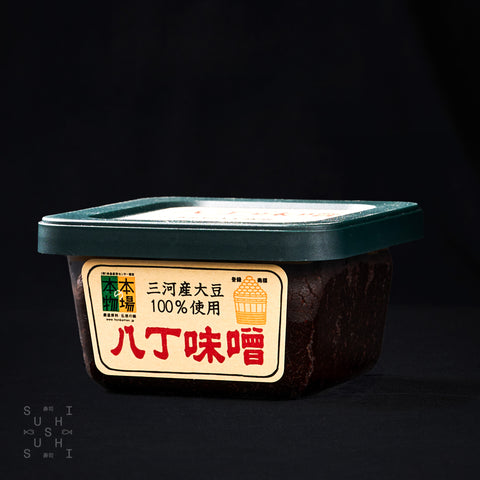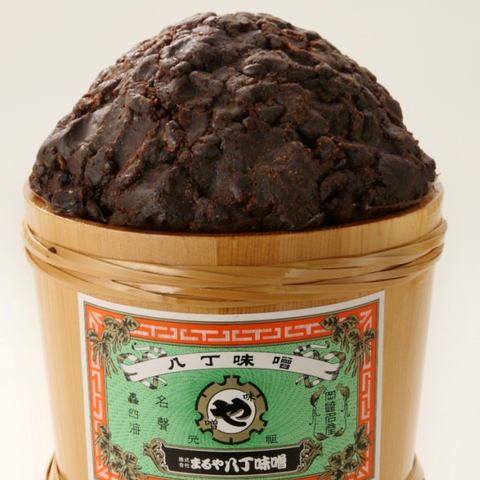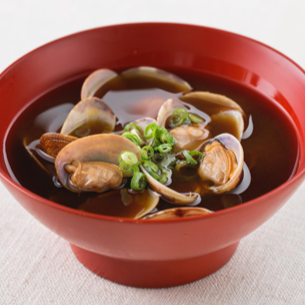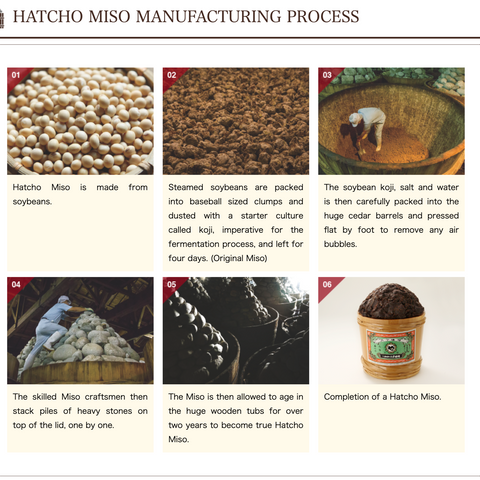



Maruya, Original Hatcho Miso, 300g
Hatcho Miso is a traditional Japanese soybean paste renowned for its robust umami flavour and deep, rich aroma. This dark miso is meticulously crafted using steamed soybeans, salt, and koji culture, then aged for over two years in cedarwood barrels, weighted with river stones to ensure consistent fermentation. The result is a dense, hearty paste with a slightly sweet undertone, offering a complex taste profile that enhances a variety of dishes.
How to Use
Incorporate Hatcho Miso into your culinary repertoire by dissolving it into soups like miso soup or stews to impart depth and richness. It serves as an excellent marinade base for meats and fish, adding a savoury glaze when grilled or roasted. Additionally, blending it into sauces or dressings can elevate the flavour of vegetables and salads.
About Maruya Hatcho Miso Co., Ltd.
Established in 1337, Maruya Hatcho Miso Co., Ltd. is the oldest continuous producer of Hatcho Miso in Japan. Located in Okazaki City, Aichi Prefecture, the company has upheld traditional miso-making methods for centuries, contributing significantly to Japan's rich culinary heritage.
八丁味噌
Hatcho Miso
Spec
- Ingredients: Steamed soybeans, salt, koji culture
- Lifestyle: Suitable for vegetarians and vegans
- Prefecture: Aichi
Recipe: How to make Hatcho Miso soup (Serves 4)
Miso soup recipes vary widely from region to region. Here is one recipe common to Aichi Prefecture.
Ingredients
- Maruya Hatcho Miso
- Dashi powderor shiro dashi liquid
- Hon Mirin
- Shibanuma Dark Soy Sauce
- Daikon radish
- Dried wakame seaweed
- Spring onions
Method
- Peel the daikon and chop into cubes about 3 cm/1 inch square.
- Bring water in the pot to boil and place in the daikon.
- Boil until daikon is 75% cooked (about the same consistency if you were boiling potatoes and wanted them firm).
- Turn heat down so water is simmering.
- From now on do NOT let the water boil.
- Add about half a teaspoon of dashi. This acts as a stock. The more you add, the “fuller body” the flavour, so you may want to experiment a bit.
- Using a fine sieve (or place the paste in a ladle and mix it into the soup with a fork) gradually dissolve two heaped tablespoons of Maruya Hatcho miso into the soup.
- Add just a dash of mirin and soy sauce, be careful with the soy as too much can spoil the mix.
- Simmer for about 10 minutes, stirring occasionally. The soup is ready when the miso paste has completely dissolved, don’t let it simmer too long. A difference between Hatcho miso and other misos is that it does not lose its flavour when boiled, but it is still not recommended to boil for too long.
Serve the soup into bowls, and garnish with the dried wakame and finely chopped spring onions. Don't these into the cooking pot, as the wakame has no need for cooking and the spring onions are there to just add a bit of bite. By the time you take the bowls from the kitchen to the dining room table the wakame will have rehydrated and will be perfectly al dente.
Another popular addition is shellfish. Small clams/cockles work best (make sure they have sat for a few hours in salt water to remove any sand). Here it is important not to overcook them or they become tough and chewy. One way is to first heat the shellfish in the pot with no water (adding water actually leads to a longer cooking time meaning the meat gets too tough). When the shellfish have only just opened remove them, but keep the juice left in the pot as your dashi, so reduce or exclude the dashi. Cook as above and just add the shellfish back in prior to serving to reheat.
For a more luxurious miso soup try lobster or crayfish. The same rules apply here as for shellfish, but generally only the head of the lobster/crayfish is used. Make sure you split the head lengthwise, to allow the insides to be exposed Fun note: the insides of crabs, lobster and crayfish are also called "miso" in Japanese!
Miso soup is usually one of the last things served in a meal. It should never be eaten with a spoon. It is meant to be taken directly from the bowl, hot, so you get a full mouthful, which stimulates all of your olfactory senses, with the contents (daikon, wakame etc.) eaten with chopsticks. It is also really good in a thermos/hot flask when out hiking or fishing, or in the lunchbox at work.
SKU : S0812
